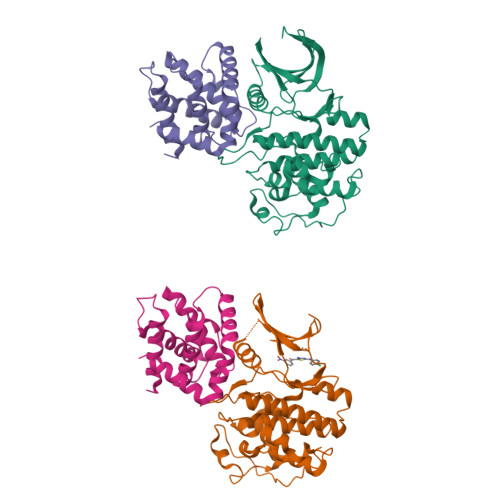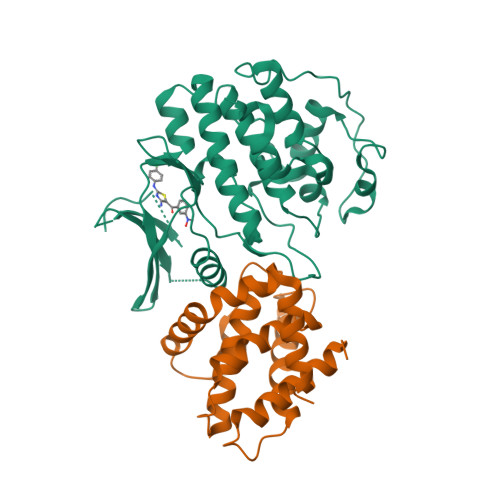Defining Cdk5 ligand chemical space with small molecule inhibitors of Tau phosphorylation
Ahn, J.S., Radhakrishnan, M.L., Mapelli, M., Choi, S., Tidor, B., Cuny, G.D., Musacchio, A., Yeh, L., Kosik, S.K.(2005) Chem Biol 12: 811-823
- PubMed: 16039528
- DOI: https://doi.org/10.1016/j.chembiol.2005.05.011
- Primary Citation of Related Structures:
3O0G - PubMed Abstract:
Cyclin-dependent kinase 5 (Cdk5) is widely viewed as a possible target for a wide variety of neurological disorders. One pathological role attributed to Cdk5 is the abnormal phosphorylation of tau that may lead to the neuronal inclusions known as neurofibrillary tangles. A high through-put screen for inhibitors of Cdk5-mediated phosphorylation of tau resulted in three compounds with distinct mechanisms of action. One compound is competitive with ATP and has a high affinity for the Cdk5 ATP binding pocket. The second compound also competes with ATP, is noncompetitive with tau, and (uniquely among this class of inhibitors) displaces adjacent amino acid residues to make room for the nitrophenyl group. A third compound did not compete with ATP, but did compete with tau at low concentrations of tau. The SAR and charge optimization derived from cocrystals of the two ATP competitors along with cocrystals of three other ATP competitors map out the importance of filling and properly charging different regions of the ATP binding pocket. Taken together, this analysis shows how the structure of Cdk5 constrains the space of potential inhibitors and reveals a pocket unfilled in all of the structures. These leads could be a starting point for structure-based drug design of more potent and selective inhibitors.
Organizational Affiliation:
Department of Neurology and Laboratory for Drug Discovery in Neurodegeneration, Brigham and Women's Hospital, Harvard Medical School, Boston, Massachusetts 02115, USA.



















